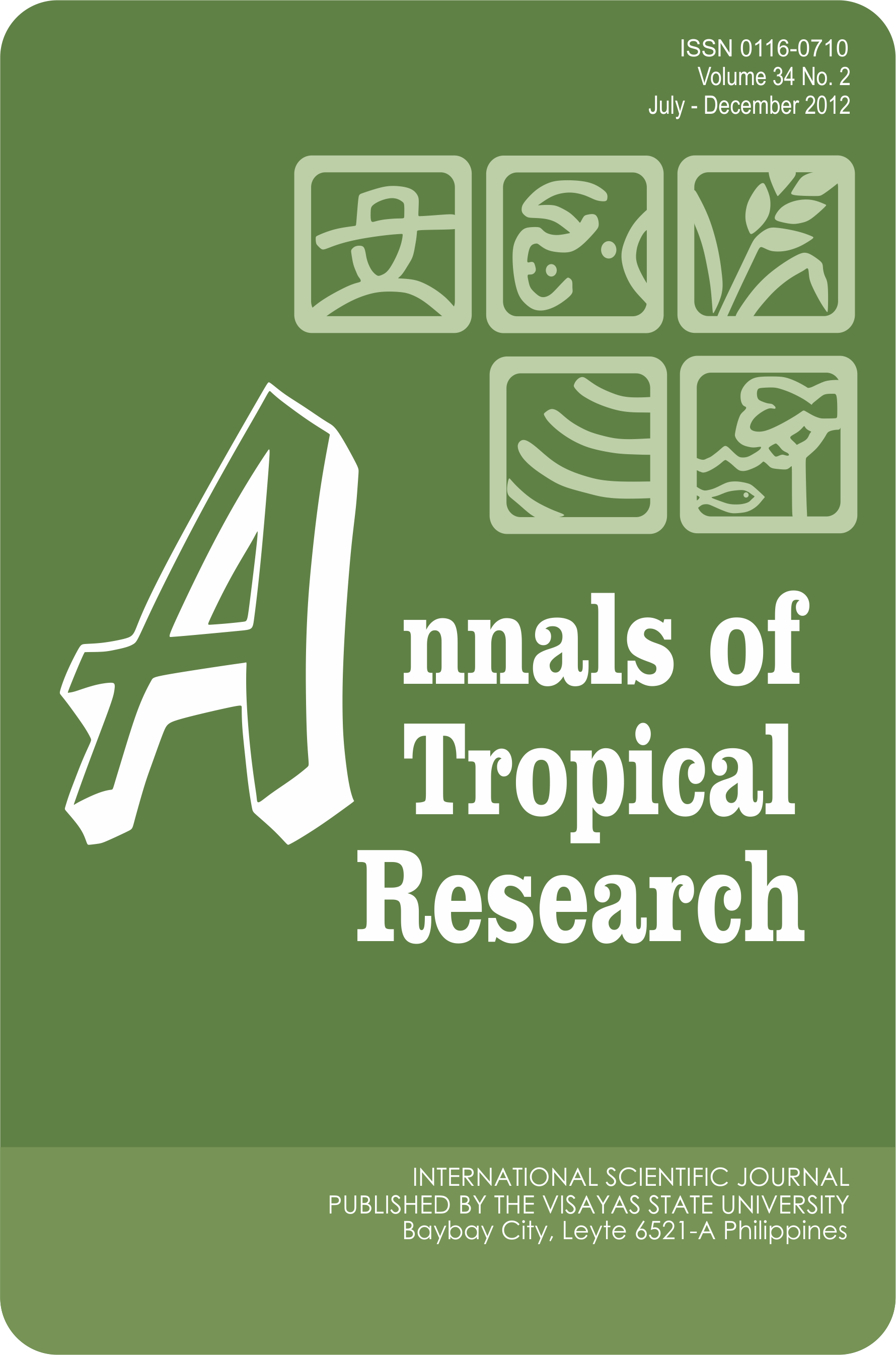Managing Rice Residues and Fertilization to Improve Nutrient Use and Productivity of Irrigated Lowland Rice
DOI:
https://doi.org/10.32945/atr3421.2012Keywords:
Fallow period, mowing, nutrient uptake, nitrogen-use efficiency, rice straw managementAbstract
Two field experiments were conducted in two sites with different soil properties to determine the appropriate management of rice residues coupled with cultural practices, including land preparation and fertilization to improve the nitrogen use efficiency and productivity of irrigated lowland rice. The study showed that in general, mowing of rice stubbles and either plowing or rotavating the soil did not affect the plant nutrient uptake (PNU), grain and straw yield, and yield components. In 2010 dry season, the highest PNU, yield, and return on investment (ROI) were obtained from the Minus-one Element Technique (MOET)-based fertilization compared to Nutrient Manager (NM)-based. In contrast, NM-based treatments had higher agronomic (AEN) and physiological efficiency of fertilizer nitrogen (PEN) due to higher level of N applied using the MOET compared to NM-based fertilization. In 2010 wet season, the incorporation of rice straw alone increased the uptake of P and K, similar to the crop supplied with additional inorganic fertilizer. Inorganic fertilizer treatments with or without additional chicken manure (CM) had higher grain and straw yields, yield components specifically number of tillers and panicles compared to CM and control treatments. The AEN of NSIC Rc212 was highest in plots with RIF, while CM produced the highest PEN due to higher percentage utilization or absorption of N in treatment with the least amount of N applied. Supplemental inorganic fertilizers in addition to rice residues and CM are indispensable to increase the rice yield. Incorporation of 4-5 t ha-1 rice straw for one cropping season of rice is not sufficient to significantly increase the N uptake and yield of the subsequent rice crop. The 2 month-fallow period after incorporation of straw and stubbles prior to transplanting did not affect rice yields suggesting that this length of time was sufficient to decompose the incorporated rice residues. The application of organic materials like rice straws and chicken manure was also instrumental in attaining adequate level of ROI. Therefore, continuous recycling and incorporation of rice straw in the soil during fallow period is not detrimental to the subsequent rice crop and contributes to the soil nutrient reserves which may lead to the improvement of yield and income in the long run.
Downloads
Submitted
Published
How to Cite
Issue
Section
License

This work is licensed under a Creative Commons Attribution-NonCommercial-ShareAlike 4.0 International License.











